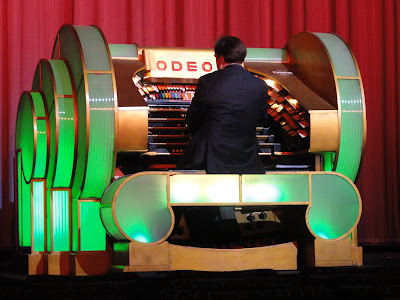
Like other Keaton movies I have seen, such as The General and Steamboat Bill, JR , the film is a magic mixture of invention, slapstick humour and observation of the human condition.
There is a brilliant dream sequence and lots of playing around with the idea of cinema - such as his dream double moving in and out of the film.

The second film is clearly Russian propaganda of the time, but cleverly allows you to see the gap between rich and poor and the reliance of society on the hardworking labourers in the mines and the factories.
The use of the tram as a way of linking all of these elements was a reflection of how proud they were of this new mode of transport. There was also alot of help given to the viewer as to how it was being filmed by the cameraman - lots of shots of him hanging off trams and down mines with the horses.
There were quite a few references to mannequins being used in working conditions - perhaps a veiled comment on how the poor were being exploited but subtle enough to pass the censors.

Enjoyed the images of the telephone exchange operators and the web of wires.

Both films were accompanied by original scores by the Odeon Leicester Square organist - another treat, as I think this is normally reserved for premieres and Royal visits.

He gave us a talk on its history, having been put in in 1937 as the largest of its kind at the time. It is nicknamed the Duchess and has 1700 pipes under the stage - 5 keyboards, lots of silent picture music effects, a melotone unit and lots of percussion and drum sounds.
He's been the organist for 18 years and clearly feels he has one of the best jobs in the world.
This is him disappearing into the pit - I enjoyed the wave ...
No comments:
Post a Comment